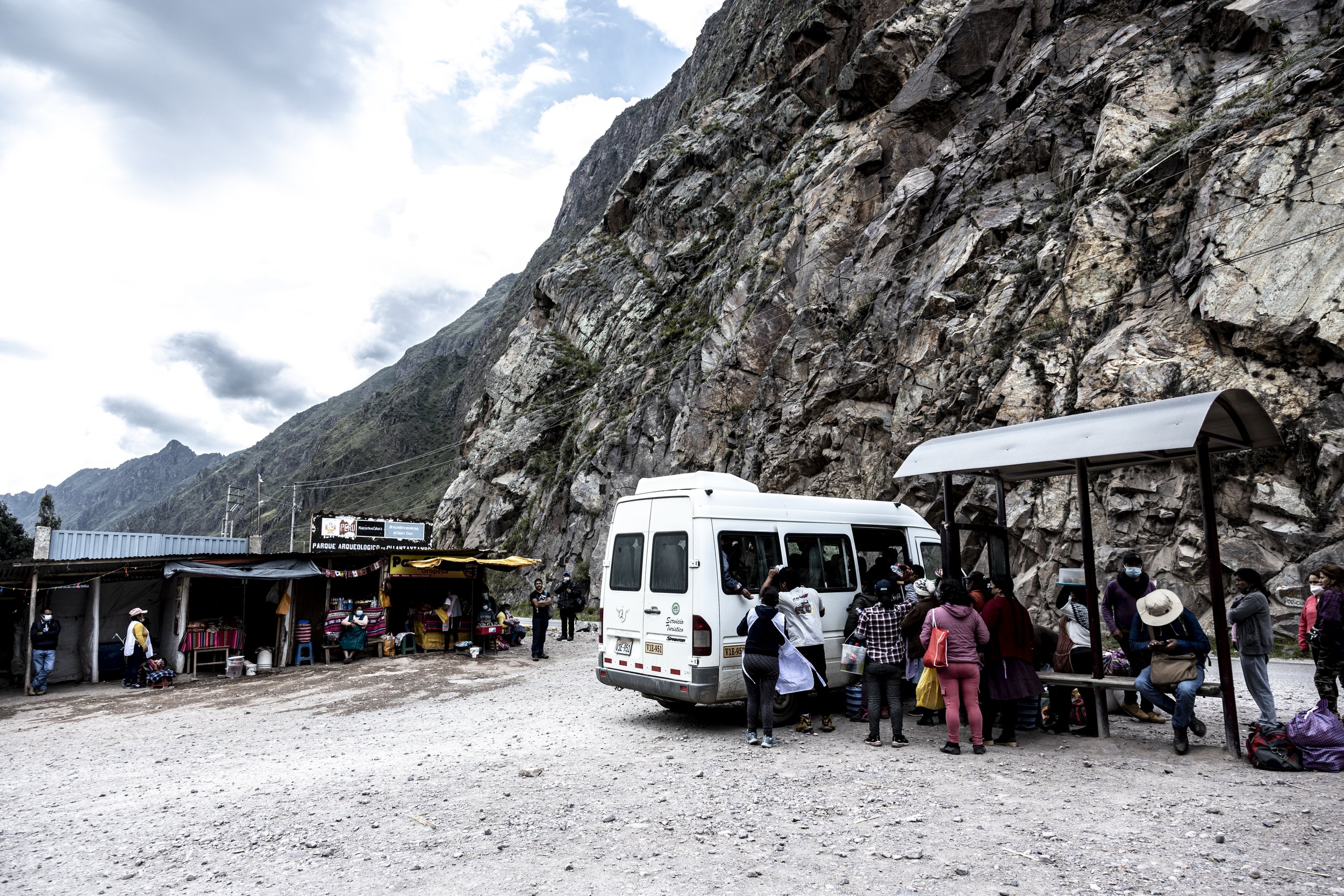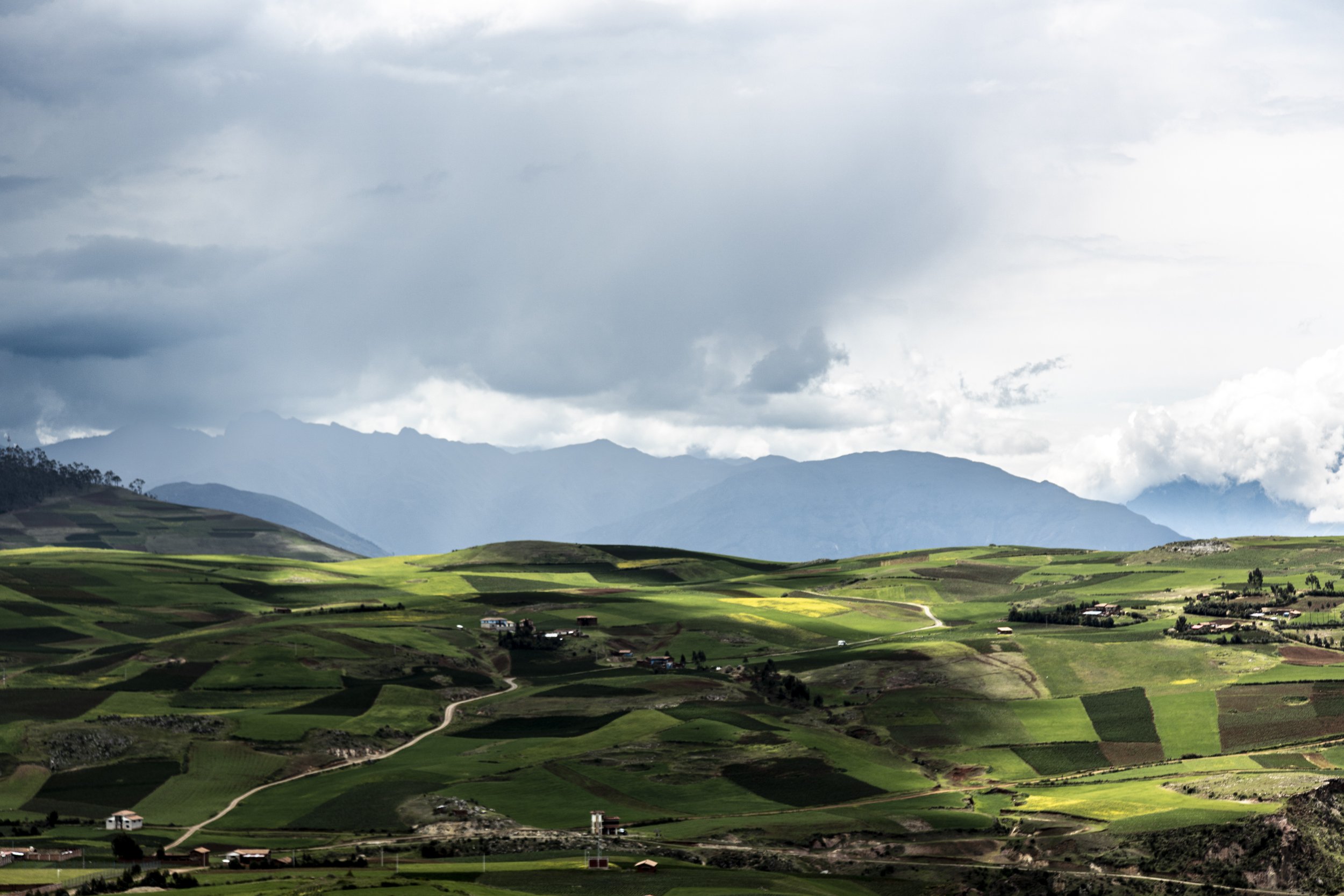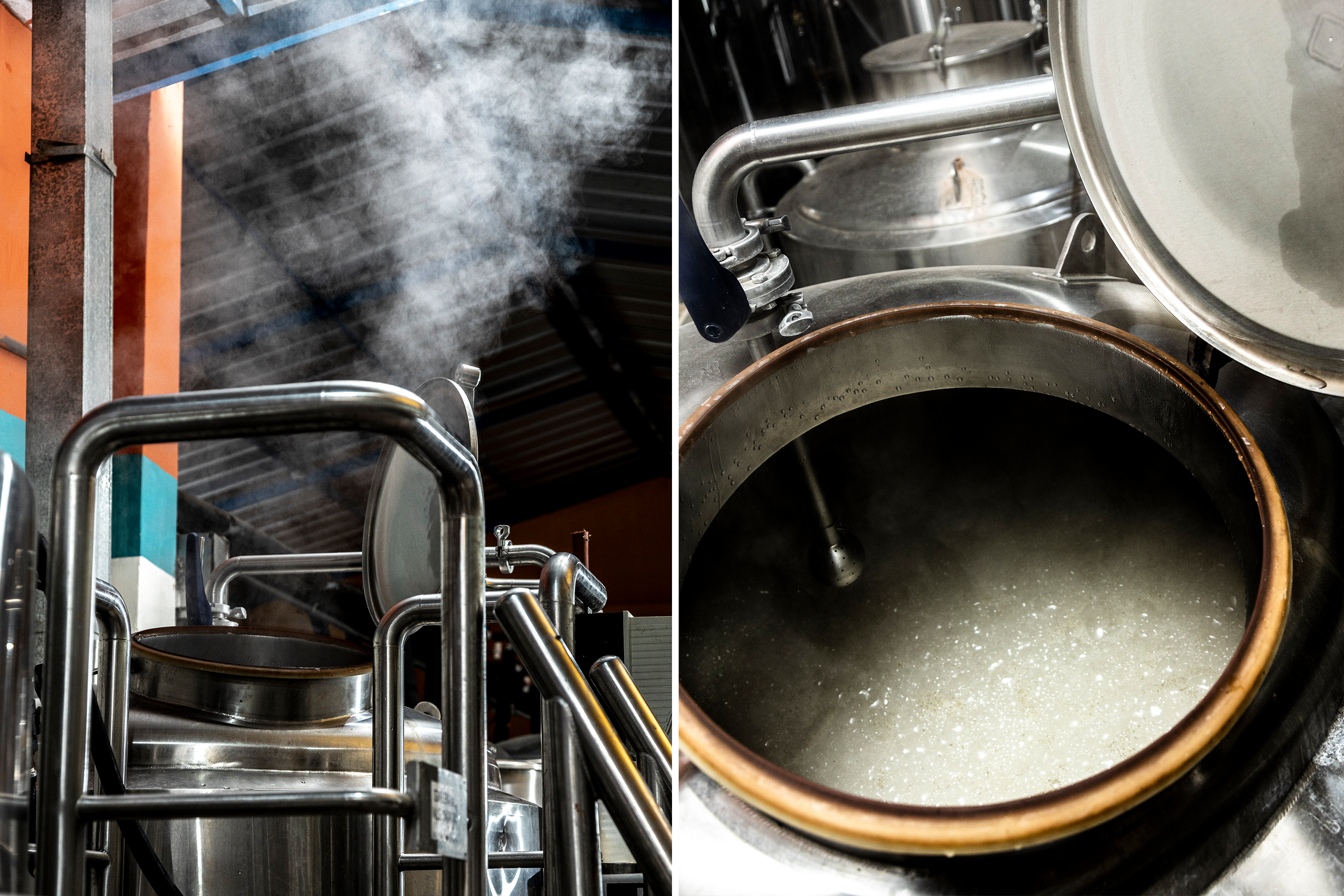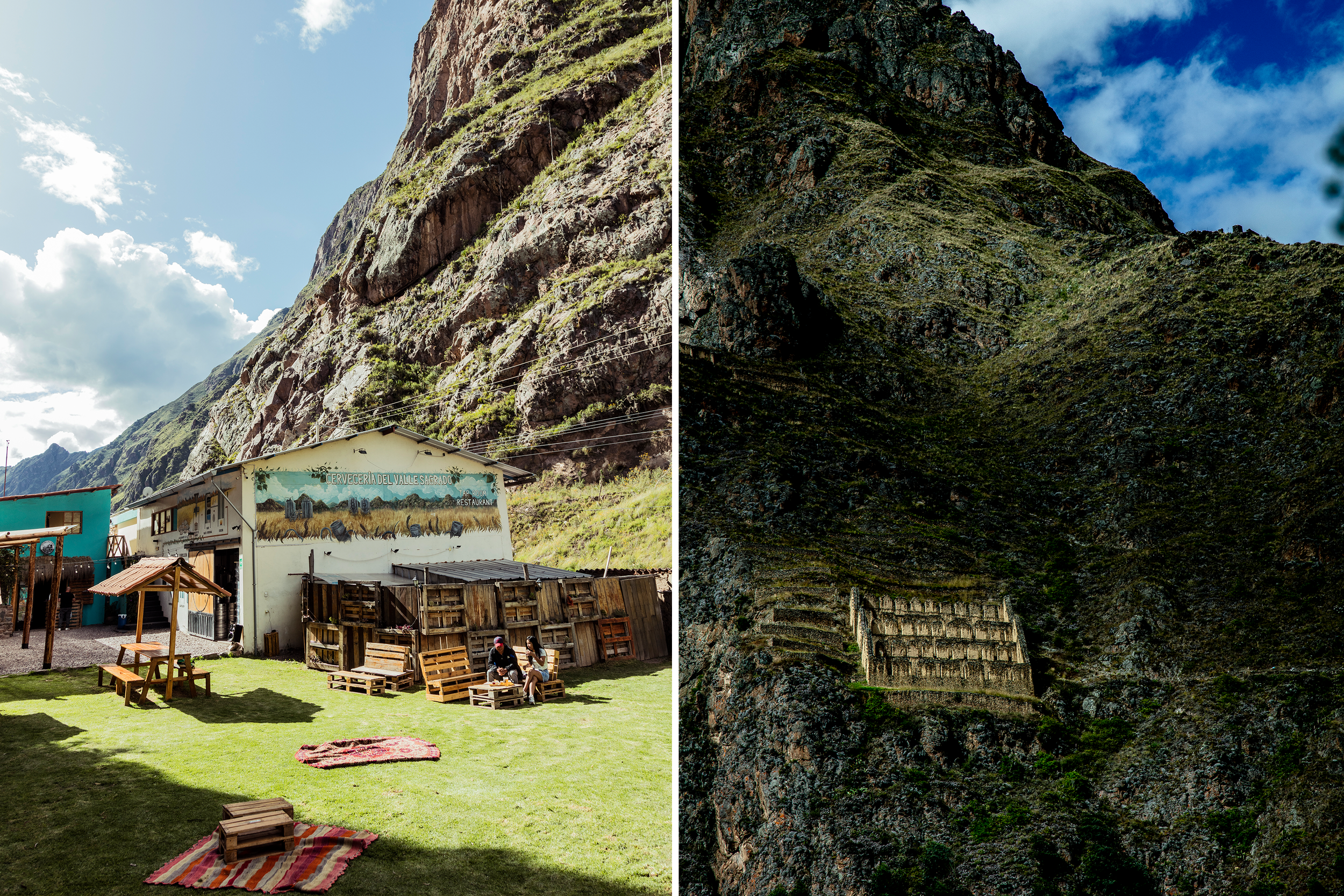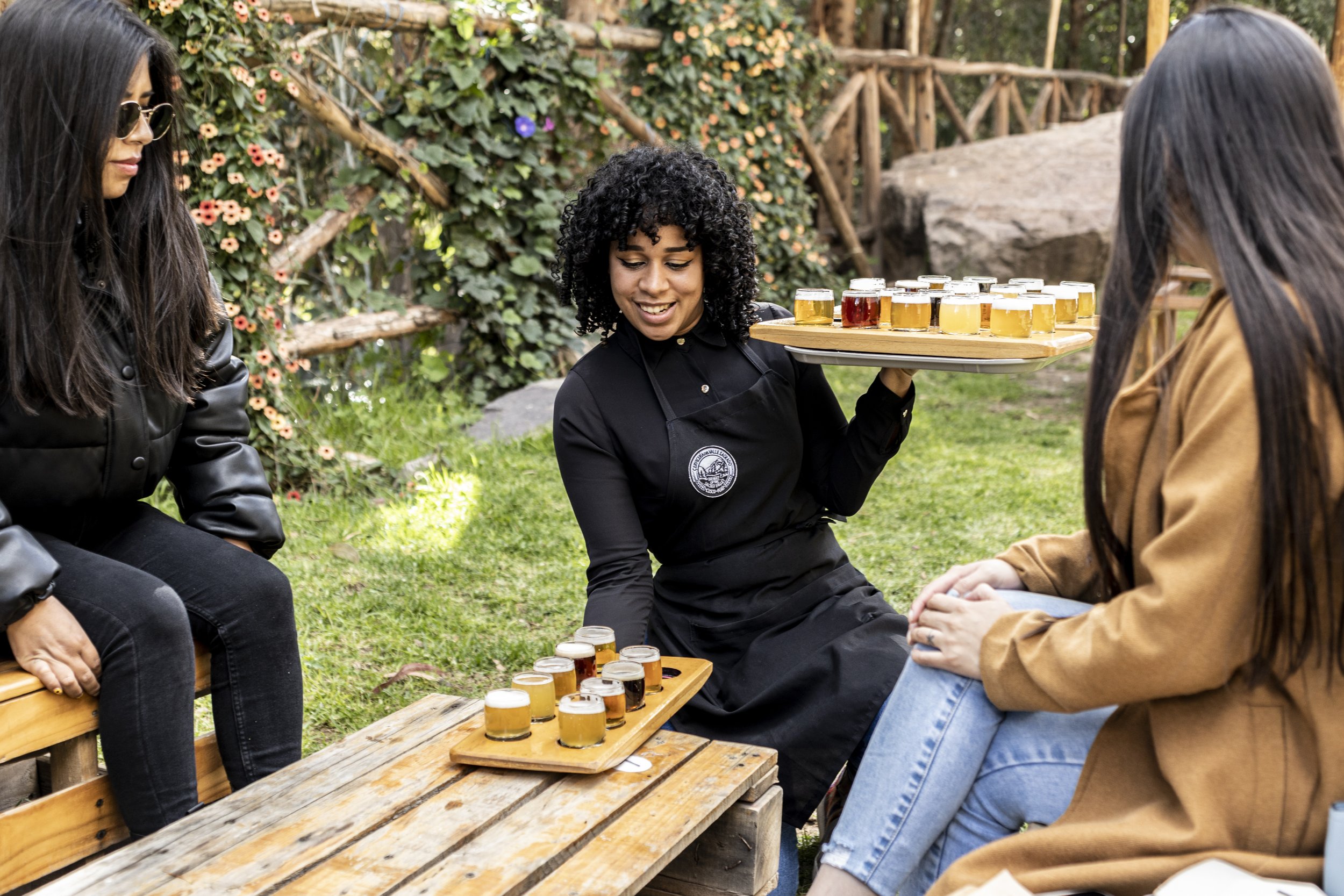When a farmers’ strike in Peru’s Cusco region stops travel into the Sacred Valley, it’s suddenly impossible to reach Cervecería del Valle Sagrado, perhaps the most influential brewery and taproom in the Andes. Unwilling to be branded a scab or run into a crowd of striking farmers, I stay put in my hotel in the nearby high-altitude town of Urubamba. For the time being, talking to Peruvian brewer Carlos Barroso is on ice.
And we have a lot to talk about—like how Barroso’s work at the “Brewery of the Sacred Valley” has helped give Peruvian beer an internationally recognized identity. Or about the challenges of brewing at almost 9,500 feet above sea level, and the joys of using uncommon raw materials, such as cactus fruit and copoazú. Or we could talk about his work with leaders in global gastronomy, including Mil, the Andean fine-dining venue run by two chefs whose establishments are ranked among the World’s 50 Best Restaurants. There’s plenty to discuss—whenever I finally get there.
With burning tires and stumps on their picket lines, the protesters—demonstrating against cost-of-living increases and against president Pedro Castillo—blockade Urubamba’s entrances and exits, as well as those in other regional towns. When the protest ends after three days, wood and rubber debris litters the eight miles of road between Urubamba and the village of Pachar, the home of the first working craft brewery in the Sacred Valley.
The community-led action is just one of the unexpected logistical hurdles that Barroso encounters—and overcomes—in his work in the Andes. There are no supply stores in Pachar, a village of 303 inhabitants located at 9,265 feet, just undulating farmland that links small towns artfully framed by soaring mountains, known locally as apus, that are also considered spirits by the Indigenous communities here. The Río Urubamba, a mighty headwater of the Amazon, flows straight past the brewery. Alongside its current, the railway line transports visitors from Cusco to Aguas Corrientes, en route to Machu Picchu. If those visitors stop off at the cervecería, they can sample Apu Verónica, an American Double IPA named for the glacial mountain whose acute white peak dominates the Sacred Valley.
Six centuries ago, this area was the powerful Quechua civilization’s primary breadbasket. The city of Cusco is the administrative hub from where the Incan Empire—as the great Quechuan civilization is more commonly known—ruled parts of modern-day Argentina, Bolivia, Chile, Colombia, Ecuador, and Peru. It can be literally breathtaking for first-time visitors, dizzying even (especially when sipping chicha de jora, a traditional Andean corn beer whose 3% ABV can rush straight to your oxygen-deprived head at high elevation). After six years living and working in this beautiful and mystical land, Barroso is well used to it.
Born and raised in Lima, Barroso was once a well-traveled expat, making wine in Israel and working in restaurants in Washington, D.C. After managing Le Pain Quotidien storefronts in Maryland for some years, the landscape suddenly shifted for him, and he returned to his motherland for what he imagined would be a brief spell.
By that time, he already knew Juan Mayorga, one of the founders of Cervecería del Valle Sagrado, who mentioned that the brewery was going to have a transition period before a new brewer could start work.
“He asked whether I could come to Pachar to brew for him in the interim,” Barroso says. “That person never turned up, and I’ve been here for six years.”
After moving back to Peru in 2008, Mayorga had started working in travel, linking visitors with residents of Ollantaytambo, a nearby town and Incan archaeological site. He soon saw the potential to bring craft beer to this special destination. When it came time to choose a location for the brewery between Urubamba and Ollantaytambo, he was conscious of two elements: tourism and water. Pachar’s water is hard, with lots of minerals, but it was the best quality he found in the valley. After buying the farmland from Doña Elsa—after whom the brewery’s American Wheat Beer is named—he started construction with U.S. drinking buddy and co-founder Joe Giammatteo in December 2013.
“When we constructed the premises in 2014, civil-engineering-wise we had no idea what we were doing. Being far from the city and even further from Lima means experts aren’t on hand. We are now the authorities in all kinds of areas.”
While Cusco is just 34 miles away from the brewery, in Andean terms that means a two-hour drive, snaking along narrow roads in the mountain range that runs the length of South America. Unforeseen problems such as broken pipes that transport water from mountain springs or power cuts demand ingenuity in this often unaccommodating area.
Setting up the project was a huge challenge from the onset, says Mayorga, the hands-on co-founder and general manager, and it continues to be demanding on a day-to-day basis. “When we constructed the premises in 2014, civil-engineering-wise we had no idea what we were doing,” he says. “Being far from the city and even further from Lima means experts aren’t on hand. We are now the authorities in all kinds of areas.”
Part of the thrill of making 128 barrels of beer a month amid soaring mountains is meeting all the challenges that arise. That starts with supplies that might be hard to come by even in Lima, the capital and largest city in Peru, and which are much more difficult to source high up in the Sacred Valley. Then there are the logistics of transporting those supplies or the difficulties of uniformly carbonating beers for different elevations. For Barroso, it’s all part of the adventure of producing craft beer in Pachar.
“The lack of water—pipes can break at any moment, and that happens pretty often,” he says. “The lack of electricity is another issue. When it cuts out without prior warning, a whole batch is wiped out. Then there’s logistics. How do I get our products out? A strike, like the one you just went through, delays everything.”
With the brewery’s six taprooms spread around Peru, such delays can be highly problematic. And due to the unusual changes in elevation, Barroso has to prepare those beers for local conditions.
“I sell in Lima at sea level, in Arequipa at 7,660 feet, and in Cusco at 11,155 feet,” he says. “All these places need the right amount of gas, so bottles don’t explode in Cusco or freeze compress in Lima. And of course, carbonating also depends on the style. I can’t make separate batches of Inti Punku IPA for each destination. They have to be uniform.”
Those various hurdles have made the brewing process more complex here than almost anywhere. “I have to be very creative and foresee a lot of things to make beer,” Barroso continues. “Getting equipment made to order is one solution, for example, I designed some racks, then hired a local blacksmith to make them. There are always small stones blocking the road, and I have to pick them up, move them out the way, and carry on.”
A keen craft beer consumer while living in the U.S., Barroso’s restaurant training gave him an instinct for understanding flavor. Encouraged by a buddy to give homebrewing a shot, his first attempt was a lemon-peel-infused Pale Ale. After succumbing to the beer bug, Barroso gave up his restaurant career.
“I took a year’s sabbatical and used my savings to visit breweries,” he says. As part of that educational tour, he interned at the now-closed Growlers Brew Pub in Gaithersburg, Maryland. “I worked there for a year for free, but that practical experience meant my world blew up.”
That led to a position as assistant brewer at Vanish Farmwoods Brewery at Lucketts, Virginia, before the opportunity came to return to Peru. Back in his native land, he encountered flavors unlike anything grown in Maryland or Virginia. A canvas of physical contrasts, Cusco’s northern region is fertile ground for subtropical crops such as cacao and coffee, thanks to its proximity to the Amazon, while the Sacred Valley is a dazzling, emerald-hued tapestry, crowned with pink tourmaline and topaz, depending on the crop in bloom. In the dry winter months, beige tones dominate, as root vegetables from the Oxalis tuberosa plant slumber in earthy beds.
“I sell in Lima at sea level, in Arequipa at 7,660 feet and in Cusco at 11,155 feet. All these places need the right amount of gas, so bottles don’t explode in Cusco or freeze compress in Lima. And of course, carbonating also depends on the style. I can’t make separate batches of Inti Punku IPA for each destination. They have to be uniform.”
These distinctive Andean landscapes and their native ingredients provide plenty of inspiration for Barroso to experiment and capture that biodiversity, says master brewer Marco Málaga, spokesperson for the Unión de Cerveceros Artesanales del Perú, the Peruvian craft brewers’ association.
“Cervecería del Valle Sagrado quickly positioned itself as an innovative brewery of international quality and has inspired dozens of ventures to follow in their footsteps, some of which are in the Sacred Valley, as well as in Cusco and the rest of the country,” he says.
The jungle is just four hours away from Pachar, and offers bumper crops of coffee, tropical fruits, mango, cacao, and copoazú, or white cacao. The high-altitude plateau grows Tunilla soehrensii, or airampo, a cactus fruit. Such a wide range of ingredients allows Barroso and his team to make and rotate unusual seasonal beers. For Aniversario, a Pumpkin Porter, which uses the wrinkly-skinned crespo squash, Barroso sources chuncho cacao nibs from Quillabamba, while an IPA uses the slippery mucilage from cacao pods that is normally discarded. Roja, a Red Ale, is made with airampo, giving it a distinctive magenta hue, while his Barley Wine uses chancaca, a type of sucrose derived from boiling and evaporating sugarcane juice, before it is aged in oak barrels.
“The mountains fulfill me, and my country’s history fascinates me, from the Inca, the pre-Inca and back to the prehistoric ages,” says Barroso. “All that inspires and relaxes me—I feel very lucky to be in such a spectacular place.”
Haresh Bhojwani is a master distiller who faces similar logistical issues at Destilería Andina in nearby Ollantaytambo. Along with Mayorga and the brewery team, Bhojwani and Barroso have been collaborating on a chicha de jora bourbon-mash Andean whiskey. As they work together, he says, Barroso’s eyes sparkle with every new idea.
“Carlos is always experimenting. He’s motivated by play, like a super-excited kid. Just last Saturday I watched him roast a whole lamb for the first time,” he says. “He’d invited all the guys from the brewery as well as some other friends, and was trying all these different techniques until he figured it out. We watched him turn into a master roaster before our eyes.”
Málaga hails Barroso’s experiments with grains like quinoa and amaranth, which have led to a cluster of accolades over the years.
“By innovating with local ingredients, such as Andean grains, fruits, and botanicals, as well as using ancestral processes, many of Cervercería del Valle Sagrado’s beers have won medals in Peruvian and South American competitions,” he says. “More recently, Carlos has started aging beers in old rye whiskey and wine barrels, which isn’t very common in Peru. Without a doubt, [his work sets an] example to follow for a whole generation of Peruvian craft brewers.”
Between the valley towns of Ollantaytambo, Urubamba, Maras, Calca, and Pisac, farmers—men, women, and children—till the fields with oxen and sow fava beans and corn by hand. Because of the frigid cold, the unforgivable sun, and the difficult manual labor, they stop frequently to share their homemade, energy-giving drink: chicha de jora. Often stored in plastic jerry cans and poured into tin mugs, chicha de jora is lightly splashed into the soil by imbibers, who offer a few drops to give thanks to Pachamama, or Mother Earth. A historic Andean beverage that comes from the Huari civilization that predates the Inca, chicha de jora was Peru’s first beer, a sour concoction partially made by saliva enzymes in the chewed kernels of corn.
Another Peruvian Andean tradition is celebrating the end of a successful harvest by cooking with a huatia, the ancestral, single-use adobe brick that hails from the region. Rainbow-colored tubers and herbs are placed inside the huatia, after which the roof is smashed down on top of them, baking them in the heat.
“I talked a lot to Carlos about biodiversity and bioregions, and he loved the concept of brewing the land itself. I wanted to translate the idea of soil and bring it into the restaurant via the huatia. I thought a beer could extract its flavors while giving a sense of place, and about how we could play with these variables.”
While Barroso has only created a couple of contemporary answers to chicha de jora, a recent collaboration with Mil, a restaurant led by Peruvian chefs Virgilio Martínez and Pía León, aims to pair the traditional drink with the huatia. For Daan Overgaag, former anthropologist for Mater Iniciativa, the restaurant’s research department, such a drink can help to put Peru and the Andes into context.
“I talked a lot to Carlos about biodiversity and bioregions, and he loved the concept of brewing the land itself,” he says. “I wanted to translate the idea of soil and bring it into the restaurant via the huatia. I thought a beer could extract its flavors while giving a sense of place, and about how we could play with these variables.”
In trials, Overgaag and Barroso explored various techniques for heating up different types of rocks and submerging them into boiling water using a chomba, a three-foot-high clay pot often used to make chicha de jora, to create a rolling boil “from the inside out.” They also played with flavors, adding herbs like huacatay (or Andean black mint), and rocoto chili peppers, which combined with the clay and rock flavors, as well as with the huatia’s mineral, herbal, and smoky aromas.
“Although I use lots of ingredients from the region, this is my most Andean creation so far,” Barroso says.
The dynamic between Mayorga and Barroso is key to their mission of moving Andean brewing forward. The two have plenty in common: Both lived and worked in the U.S., both undertook a professional change of direction, and both chose to return to their home country. For his part, Mayorga first worked in the coffee industry, then in telecoms, before moving into immersive student travel. Together, as marketing head and brewer, they work to create classic, seasonal, and barrel-aged lines, pushing boundaries and joining forces where possible. Besides working with Destilería Andina and the team behind Mil, another recent collaboration was with Lima-based Psycho Brewing Company to create a blackberry-infused Sour Ale called Sierra. But not all projects work out.
“I tried to cultivate hops for a bit but it didn’t work,” Barroso says. “I tried with rootstock twice, at different times of the year, but the ones I brought in from the U.K. froze because it was the start of winter.” It’s still one of his long-term goals.
Regardless, there’s always a bigger picture to consider, and that includes a commitment to donating spent grain to feed cuy (guinea pigs, which here are cultivated for food), and cattle raised by Pachar’s residents, as well as working with a nongovernmental organization, the Sacred Valley Project, that gives young women from remote Andean communities the opportunity to gain work experience at the brewery.
“Although chicha de jora is usually made by women, we know the brewing world tends to be dominated by men. But we don’t want it to stay that way because beer is consumed by everybody,” he says. That includes the cuy and cattle, he notes. “They get a lot friskier when they are a bit drunk,” he laughs.
Despite hurdles like strikes blocking roads, or having to drive high up into the Andes to fix burst water pipes, Barroso breathes deep, keeps calm, and carries on. “If I saw this as a job, I wouldn’t be here,” he says. “But this place is my inspiration. My passion to make great beer with the ingredients that life gives me, in one of the most difficult places in the whole world, is what keeps me going.”
